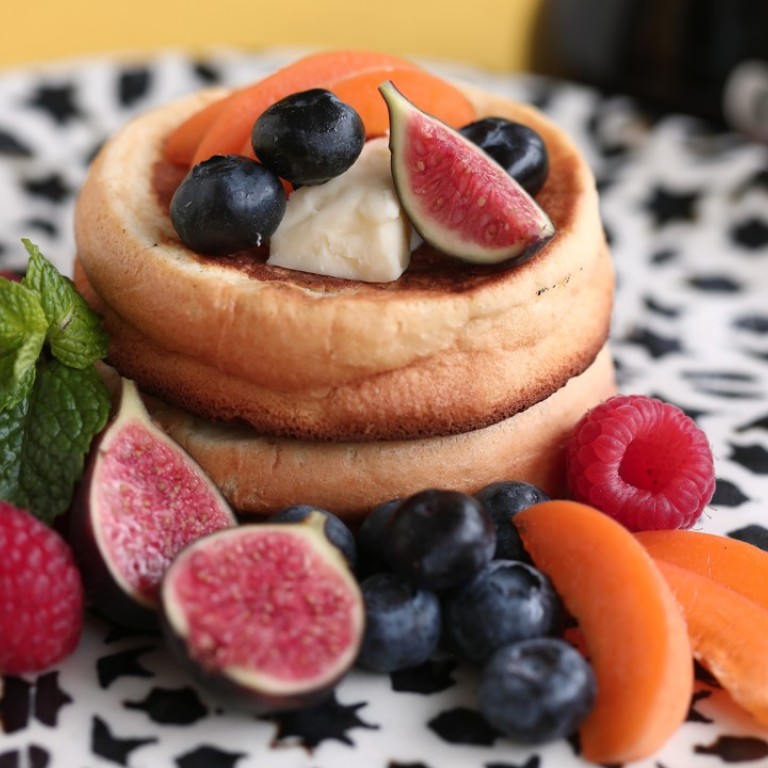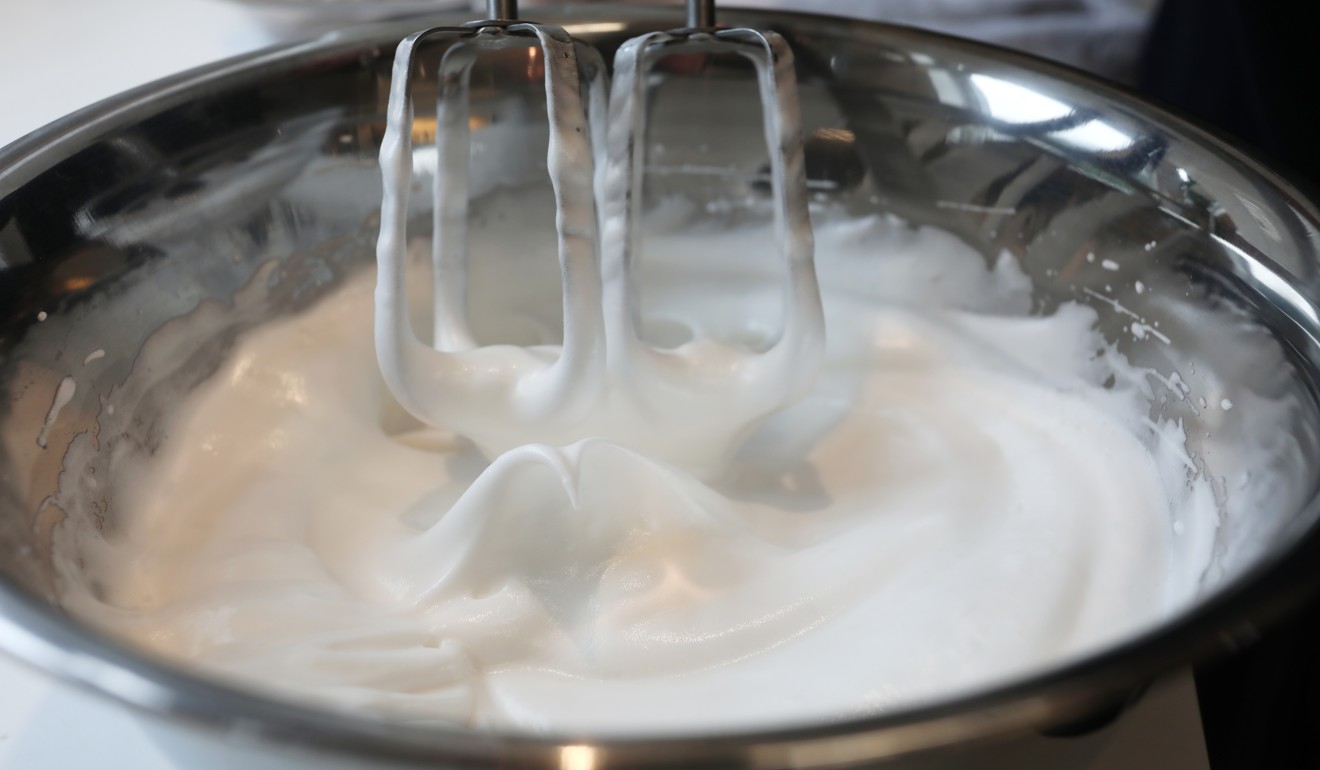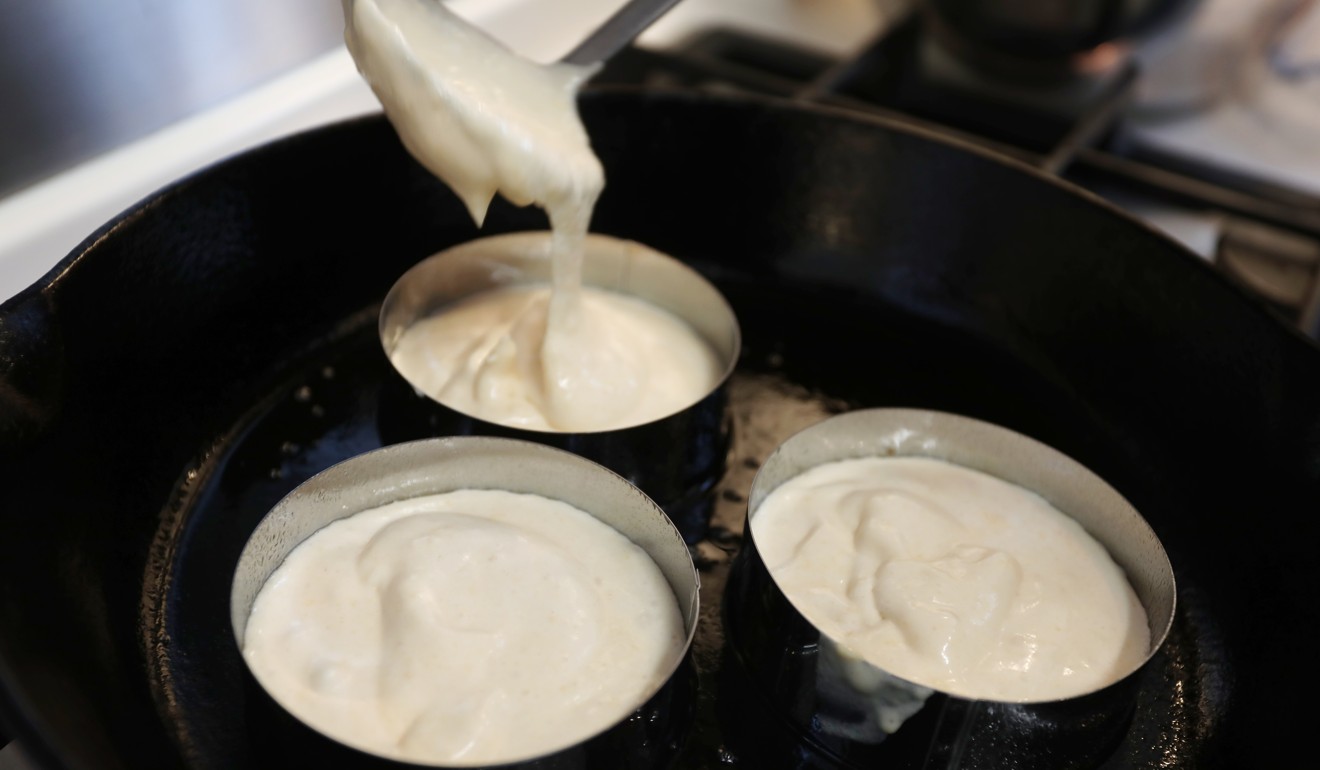
Big in Japan, souffle pancakes are a light and fluffy breakfast treat
With a few simple tricks, it’s possible to recreate such fanciful confections at home
Trust the Japanese to turn a simple breakfast into something special. Don’t make this for a crowd – the batter deflates quickly. If you’re cooking for more than two or three, prepare each batch separately and cook immediately, or the pancakes won’t be as light.
Sour cream souffle pancakes
Souffle pancakes differ from other types of pancake because of the way they are mixed. Instead of just whisking all the ingredients together, the eggs are separated and the whites are whipped before being folded in gently, so when cooked, the pancakes puff up.

The first time I made these, the batter visibly deflated between cooking the first three pancakes and the next three, so now I use two pans and cook them all at the same time. You’ll need to move the pans around over the flame, to even out the heat.
You can cook the pancakes free-form or use ring moulds, which makes them neater. I use ring moulds that are 8.5cm in diameter and 3cm high. You can make them smaller, but they should not be much larger or the outside will burn before the inside is cooked.
This recipe calls for an unusual step: using chilled egg whites. Most of the time, you beat egg whites that are at room temperature, because they whip up faster. But so many of the recipes I checked online called for chilled egg whites, saying they are more stable, that I decided to try it. They were right. Cold egg whites take longer to whip, but they keep their volume for a little longer.
3 large eggs, chilled
60 grams cake flour
45 grams sour cream
25 grams unsalted butter
The finely grated zest of one lemon
¼ tsp fine sea salt
½ tsp fresh lemon juice
45 grams granulated sugar
To serve:
Salted butter, slightly softened (optional)
Maple syrup
Fresh fruit
Put two heavy skillets over a low flame on the stove, so they will be ready by the time the batter is mixed. Move the pans around over the flame, so they heat evenly.
While the pans are heating, make the batter. Separate the eggs, then put the egg whites back in the fridge. Sift the cake flour into a medium-sized mixing bowl. Melt the butter (either in the microwave or in a pan on the stove), then cool it to tepid.
Add the egg yolks, sour cream, melted butter and grated lemon zest to the bowl holding the cake flour. Immediately whisk to combine.

Put the egg whites into a clean, dry mixing bowl. Using an electric mixer fitted with clean, dry beaters, start whipping the whites at medium-low speed. When the whites are frothy, add the salt and lemon juice. With the mixer on medium speed, slowly drizzle in the sugar. Turn the mixer to high and whip until the egg whites are glossy and have medium peaks.
Add about one-quarter of the egg whites to the egg yolk/flour mixture (which will be very thick) and use a spatula to quickly mix the ingredients together. Gently fold in the remaining whites in two additions, trying to maintain as much volume as possible.
If using ring moulds, put three in each pan. Spray the pan and the interior of the moulds with pan-coating. (For free-form pancakes, just spray the pan before ladling in the batter.) Divide the batter between the six moulds – it should fill the moulds about halfway to three-quarters. Cover the pan with the lid and cook over a low flame for about three to four minutes (if they burn before then, the heat is too high). Continue to move and rotate the pans around over the flame to minimise the hotspots.

The pancakes will start to dry out around the sides, and small bubbles will form around the edges. When a few of the bubbles pop without filling in, they’re ready to flip. If using moulds, it is easiest to remove the mould before flipping the pancakes (by now, their shape should be stable). Flip the pancakes and let them cook for another minute or two, or until set but still a little wobbly.
Put the pancakes on plates, stacking them two-to three-high. Serve immediately with a pat of butter (if wanted), maple syrup and fresh fruit. Serves two or three.

